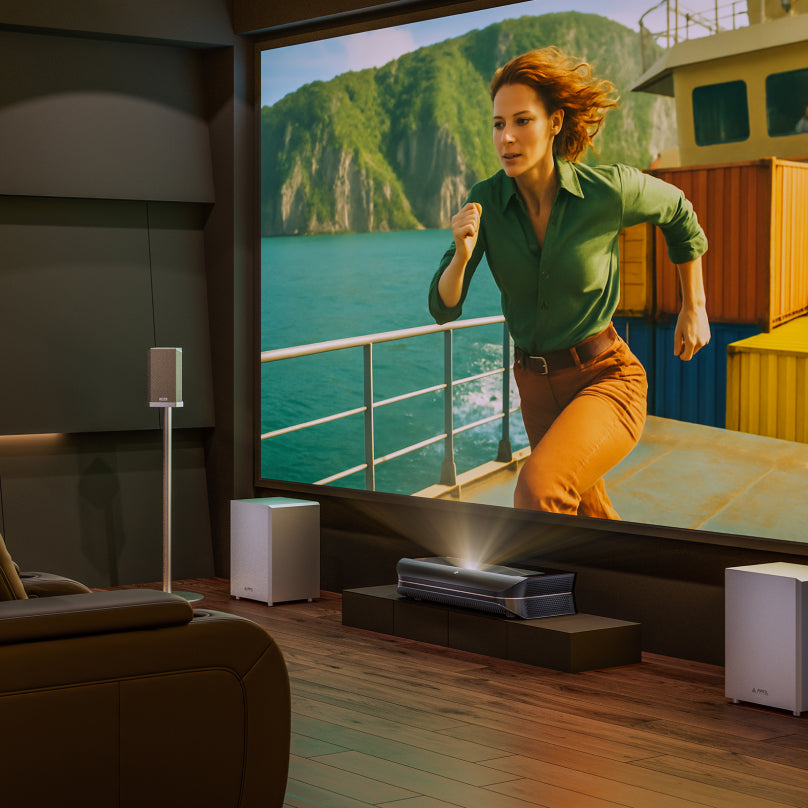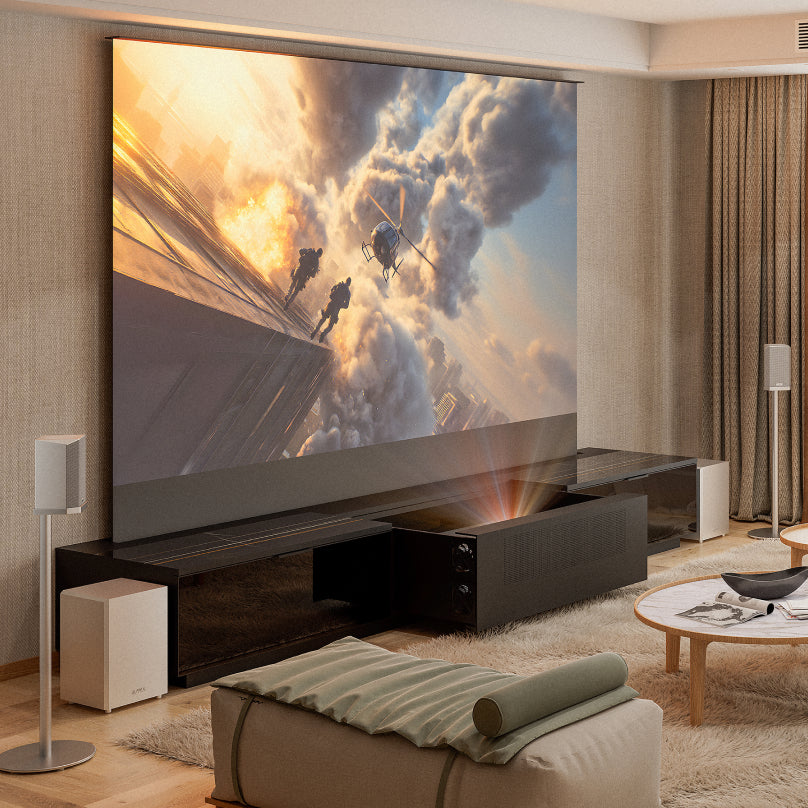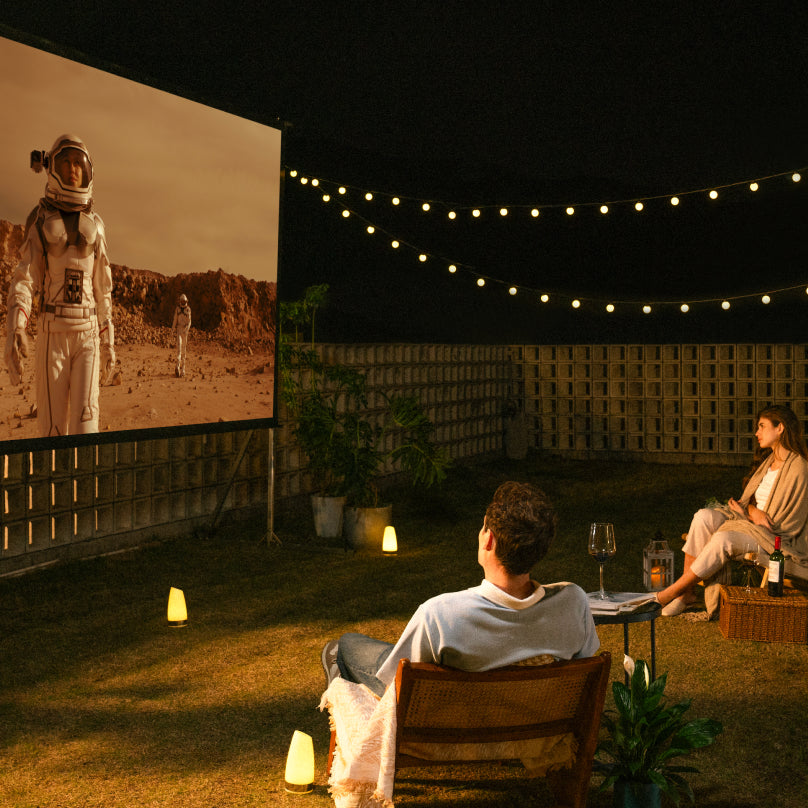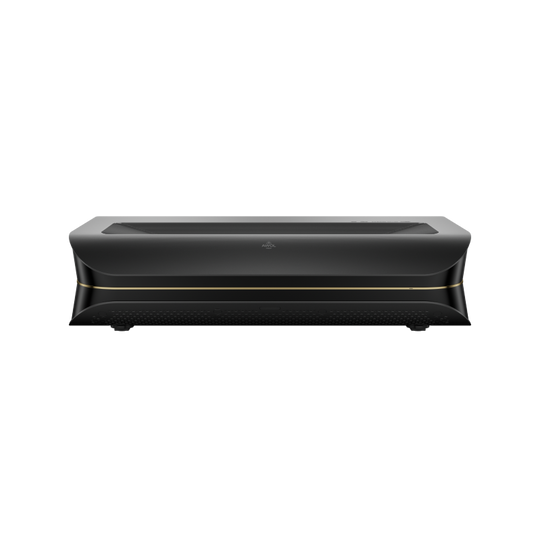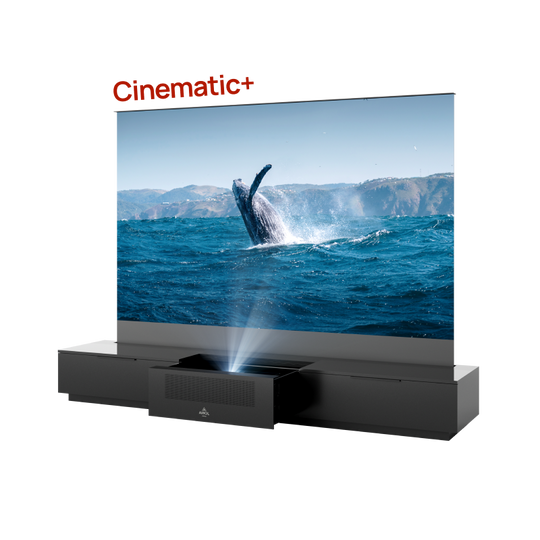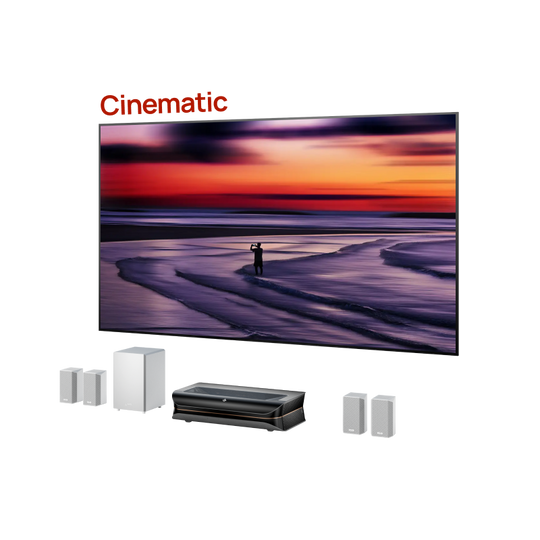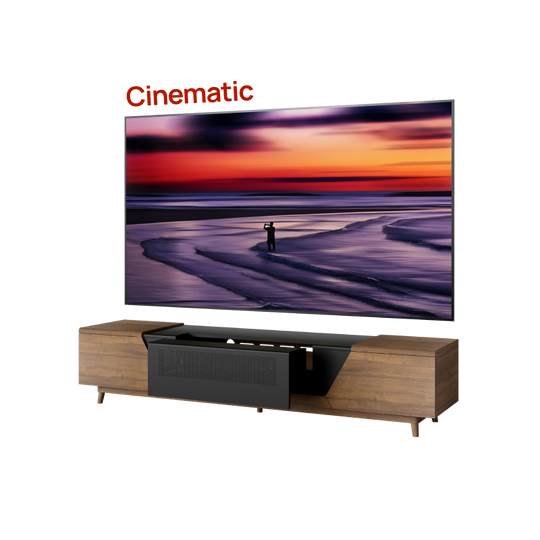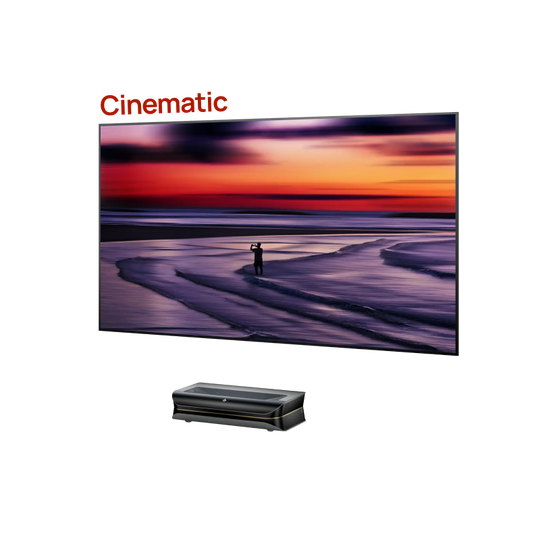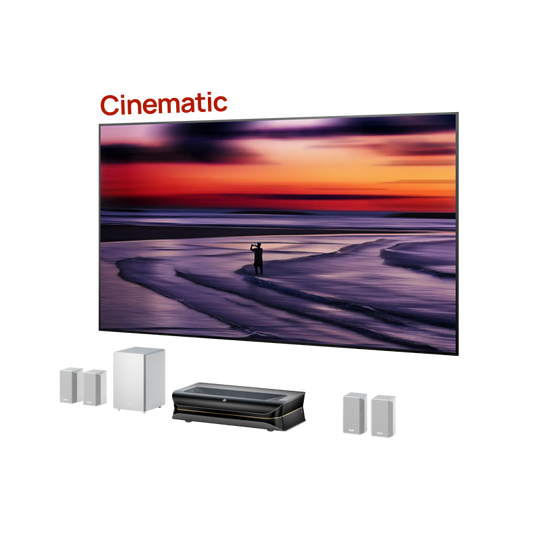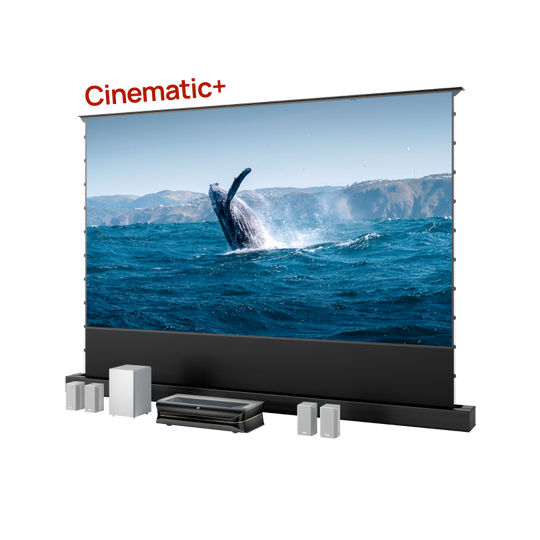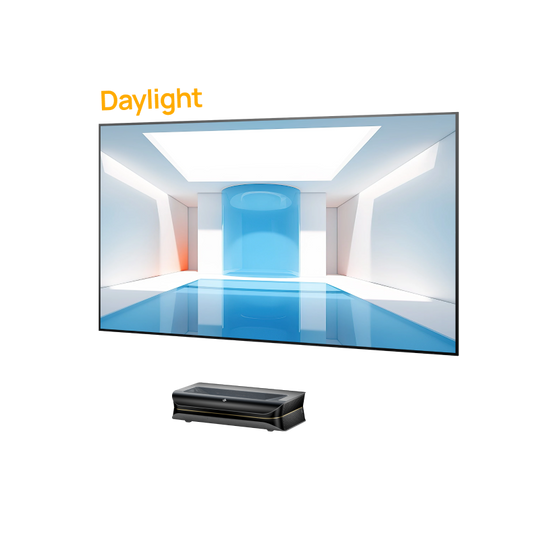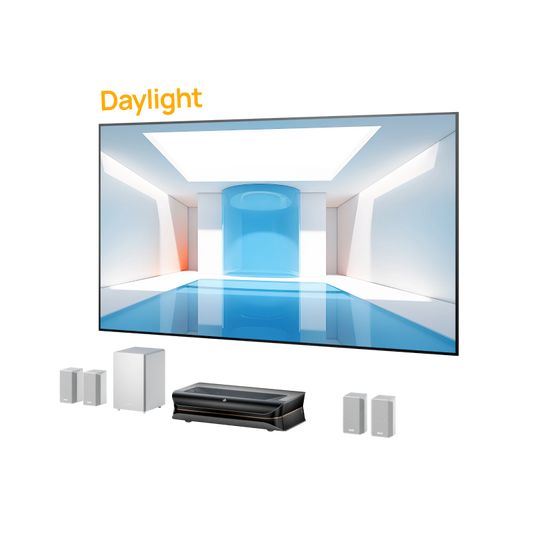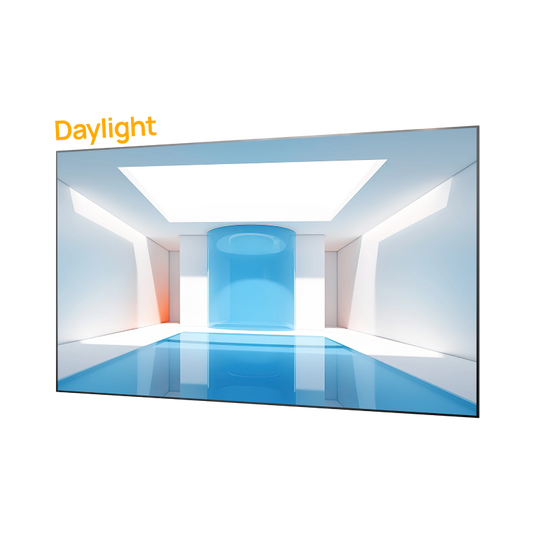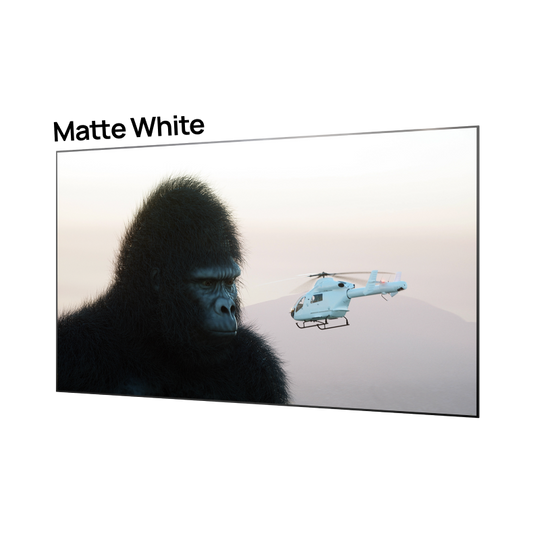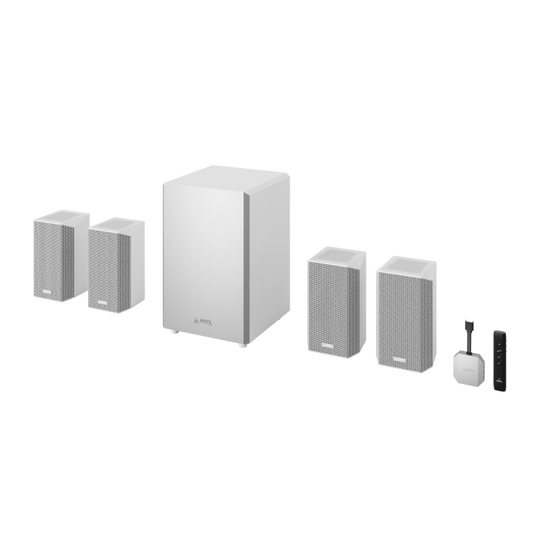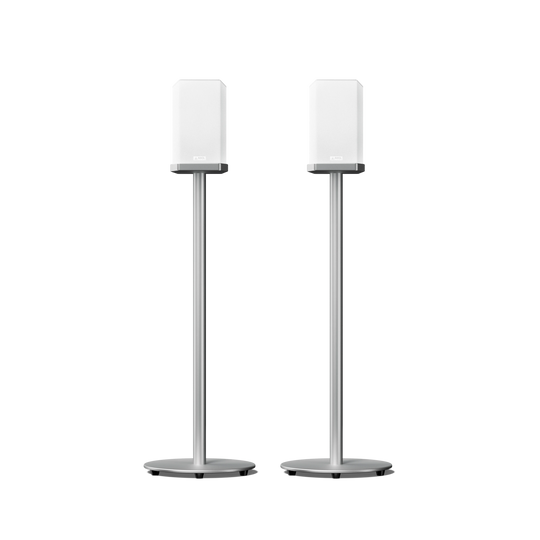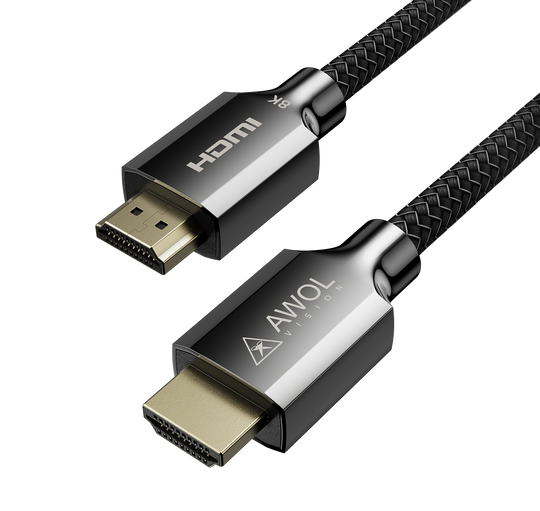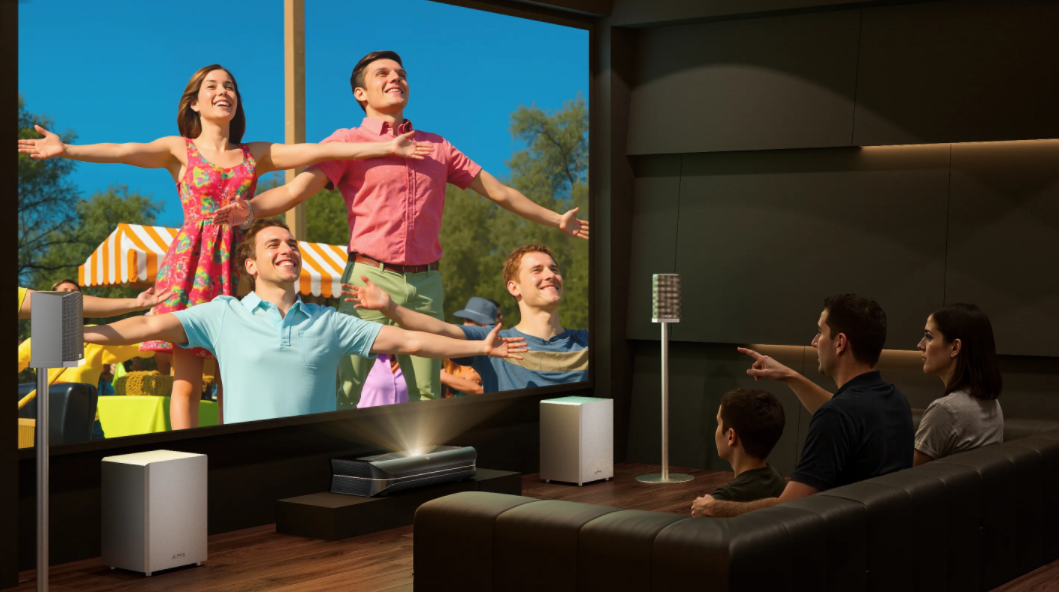You're deep in projector research, comparing 4K models, and suddenly you hit a wall. You find forums and articles mentioning the "DLP rainbow effect," "headaches," or "visual artifacts."
It’s an incredibly frustrating discovery. You’re worried about spending thousands of dollars on a state-of-the-art projector—what you need to know before you buy a laser TV is whether this "bug" will ruin the experience. You're worried it will be unwatchable for you or your family.
So, what is the rainbow effect (RBE)?
It’s a visual artifact that only some people can see. It looks like a brief flash of red, green, and blue "rainbows" that can appear in high-contrast scenes—like white subtitles on a black background, a character's eyes, or bright streetlights in a dark scene. Some people only notice it when they quickly move their eyes across the screen.
Here’s the problem: it's completely subjective.
It doesn't affect everyone. For the majority of people, it’s a complete non-issue. But for the percentage of the population who is sensitive to it, it can be distracting, disorienting, and even cause headaches.
This subjectivity is what makes buying a projector so difficult. You can't just trust a review, because the reviewer might not be sensitive to it. How can you buy with confidence?
First, you have to understand how projectors work and what really causes it.
Why the "Rainbow Effect" Isn't a DLP Problem
Let's be clear: the rainbow effect is not an inherent flaw in all DLP (Digital Light Processing) technology. DLP is famous for its razor-sharp images and incredible motion response.
The real culprit is a single, mechanical part: the spinning color wheel.
It's a "Color Wheel" Problem
Most traditional single-chip DLP projectors—the most common type on the market—use one chip to create the entire image.
To create color, they start with a powerful white light source (like a lamp, which has many disadvantages) and shine it through a spinning wheel that has red, green, and blue segments. Your brain is only ever seeing one color at a time (red, then green, then blue) in a super-fast sequence.
Your brain is supposed to blend this sequence into a single, full-color image. But for those who are "rainbow sensitive," their brain "glitches" for a microsecond and perceives the individual colors before they are blended.
That's the rainbow effect. It's your brain momentarily "seeing" the high-speed sequential colors.
Does a Faster Wheel Fix It?
This is the key question many users ask. Manufacturers have known about this problem for years and have tried to mask it. They created faster-spinning color wheels (e.g., 4x or 6x speed) or wheels with more segments (like an RGBRGB wheel).
Here is the honest answer: These changes reduce the effect. They make it invisible to more people, but they do not eliminate the cause.
The wheel is still there. The color is still being shown sequentially. For those who are highly sensitive, the problem often remains, even on expensive, modern projectors.
How to Choose a Rainbow-Free Projector: The 3 Technology Paths
If you're worried about RBE, you don't want to "reduce" the risk. You want to eliminate it. To do that, you need to understand the difference between simultaneous and sequential color.
Option 1: 3LCD (The 100% RBE-Free Alternative)
- How it works: As our DLP vs. LCD projectors guide explains, 3LCD projectors use three separate LCD chips—one for red, one for green, and one for blue. The projector's light is split, sent through all three chips at the same time (simultaneously), and then recombined into a single, full-color image.
- Pros: Because all three colors are displayed at once, it is 100% immune to the rainbow effect. It is physically impossible for it to create one.
- Cons: It's a different technology with its own tradeoffs. 3LCD can be susceptible to slightly lower contrast (making black levels appear more "grayish") and, over time, the three panels can potentially become misaligned, which can soften the image.
Option 2: 3-Chip DLP (The 100% RBE-Free "Cinema" Solution)
- How it works: Like 3LCD, this uses three separate, high-performance DLP chips (one per color). All three colors are displayed simultaneously.
- Pros: 100% immune to RBE. This is the "gold standard" for image quality, sharpness, and color—it's the technology used in the best commercial digital cinemas to create an IMAX-style experience.
- Cons: The cost. This technology is prohibitively expensive for home use, with projectors often starting at $20,000 and going up.
Option 3: RGB Laser (The Modern DLP Solution That Virtually Eliminates RBE)
This is the evolution of DLP and the "best of both worlds" solution for most people.
- How it works: This technology, used in TriChroma projectors like AWOL Vision's, is still single-chip DLP. But it completely removes the mechanical color wheel and replaces it with three separate, individual lasers: one for Red, one for Green, and one for Blue.
- The Nuance: Because it's a single chip, it still processes color sequentially. However, instead of a slow mechanical wheel, it uses ultra-fast electronic switching. This new, high-speed electronic sequencing is thousands of times faster than any wheel, minimizing the time gap between colors to a point where it is perceptually invisible to the vast majority of people, even those sensitive to traditional color-wheel RBE.
- Pros:
- Virtually Eliminates the Rainbow Effect: It solves the problem at its source (the slow, mechanical wheel).
- Keeps All DLP Advantages: You get the razor-sharp, true 4K image and lightning-fast motion response that DLP is famous for.
- Wider, Purer Colors: As a massive bonus, individual lasers produce a much wider color space for a cinematic experience (over 100% of the BT.2020 color space).
Why "Laser Projector" Can Be Confusing (Don't Make This Mistake)
Here is a critical point of confusion for buyers. Not all "laser projectors" are the same. A key part of your research is understanding RGB vs. single-laser projectors.
- "Laser Phosphor" (Single Laser): Most "laser" projectors on the market are this type. They use one blue laser that shines on a spinning phosphor wheel to create light. Because it still uses a wheel, it is still susceptible to the rainbow effect.
- "TriChroma/RGB Laser" (Triple Laser): This is the true, advanced laser system. Three separate lasers, no wheel. This is the system that virtually eliminates RBE.
The Final Verdict: Trust Your Own Eyes
If you are buying a projector, the rainbow effect is a valid concern. Here is the most honest advice:
- The 100% Safe Bet: If you know you are highly sensitive to RBE or simply want to take zero risks, your choice must be a technology that displays color simultaneously. This means choosing a 3LCD projector for a home budget or a (very expensive) 3-Chip DLP projector.
- The Modern, High-Performance Choice: The vast majority of users—even many who reported being sensitive to RBE in the past—find that RGB Triple Laser DLP projectors are completely free of the artifact in real-world viewing. They offer the sharpness of DLP with none of the old drawbacks.
Ultimately, the best advice is to trust your own eyes. Reading about RBE is one thing; seeing (or not seeing) it for yourself is another.
Instead of a traditional store, you can see how a TriChroma laser projector looks in a real home environment. We invite you to visit one of our Community Showrooms, which are hosted by actual AWOL Vision users. You can get honest, real-world feedback and see the image quality for yourself.
If you prefer a traditional retail setting, you can also find a demo at one of our official showrooms and authorized dealers.
We are confident that for almost everyone, the modern TriChroma laser system is the clear winner, offering the RBE-free experience of 3LCD combined with the superior gaming performance and sharpness of DLP.
